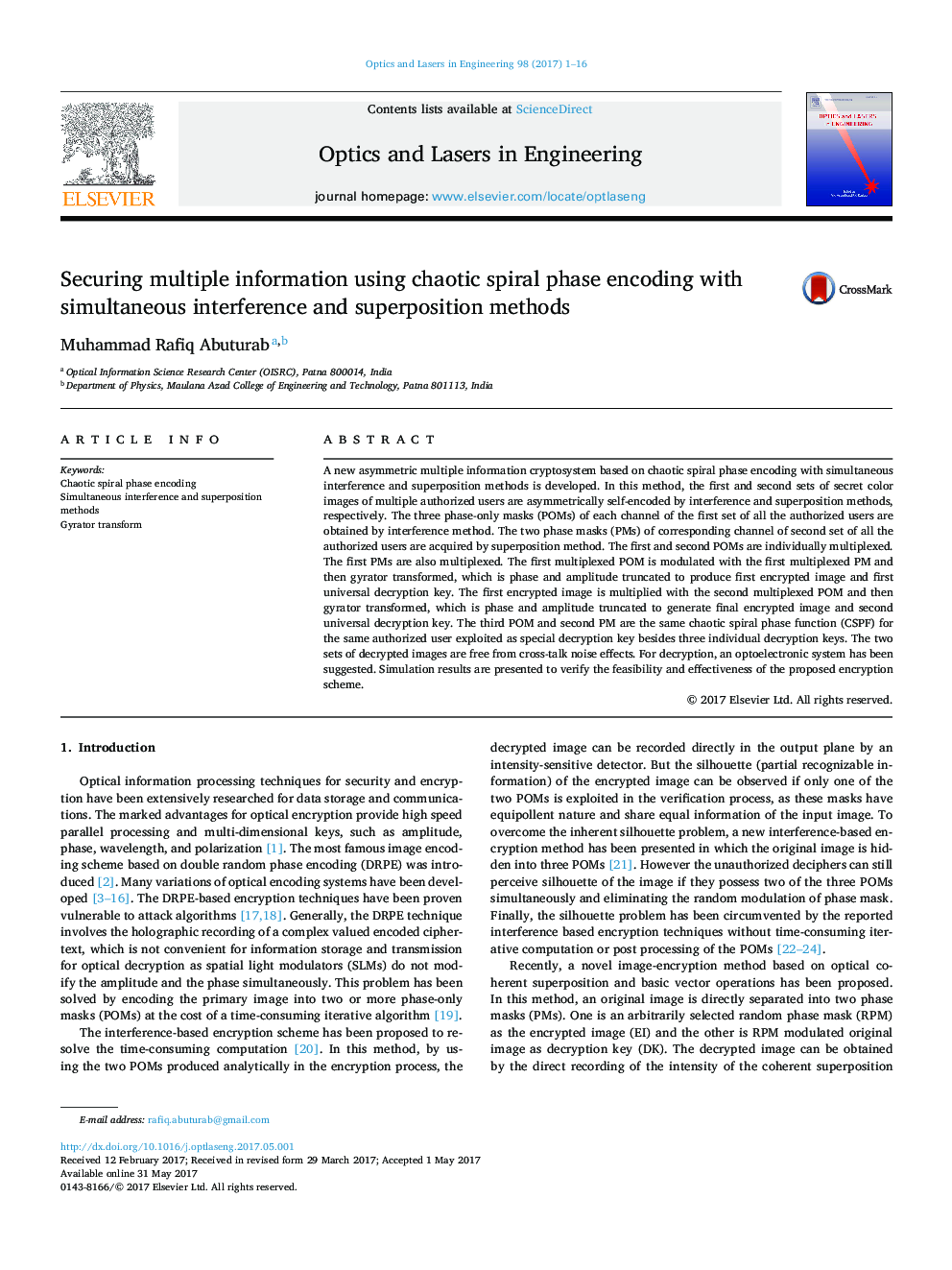| Article ID | Journal | Published Year | Pages | File Type |
|---|---|---|---|---|
| 5007793 | Optics and Lasers in Engineering | 2017 | 16 Pages |
â¢The chaotic spiral phase encoding with simultaneous interference and superposition methods is developed.â¢In this technique, both interference and superposition methods are exploited to encrypt and decrypt the secret images.â¢The third POM and second PM are the same chaotic spiral phase function (CSPF) used as special decryption keys.â¢The CSPF contains the seven sensitive decryption keys which are unknown to illegal deciphers.â¢Simulation results validate the viability and security of the proposed cryptosystem.
A new asymmetric multiple information cryptosystem based on chaotic spiral phase encoding with simultaneous interference and superposition methods is developed. In this method, the first and second sets of secret color images of multiple authorized users are asymmetrically self-encoded by interference and superposition methods, respectively. The three phase-only masks (POMs) of each channel of the first set of all the authorized users are obtained by interference method. The two phase masks (PMs) of corresponding channel of second set of all the authorized users are acquired by superposition method. The first and second POMs are individually multiplexed. The first PMs are also multiplexed. The first multiplexed POM is modulated with the first multiplexed PM and then gyrator transformed, which is phase and amplitude truncated to produce first encrypted image and first universal decryption key. The first encrypted image is multiplied with the second multiplexed POM and then gyrator transformed, which is phase and amplitude truncated to generate final encrypted image and second universal decryption key. The third POM and second PM are the same chaotic spiral phase function (CSPF) for the same authorized user exploited as special decryption key besides three individual decryption keys. The two sets of decrypted images are free from cross-talk noise effects. For decryption, an optoelectronic system has been suggested. Simulation results are presented to verify the feasibility and effectiveness of the proposed encryption scheme.
